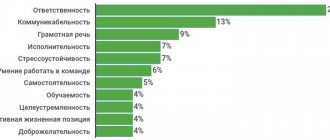Stuttering is a common speech disorder that is most often diagnosed in childhood. Pathology therapy is based on the use of various methods and means, including medications.
But medications for stuttering can only provide a temporary effect and reduce the severity of muscle convulsive activity.
What medications are taken for stuttering and in what forms (tablets, injections)? Details are in the article.
Means of complex influence
For stuttering, the doctor may additionally prescribe medications that have a complex effect.
It is recommended to use the drug in a course. In order to ensure a sedative effect, the use of the safe medicine Glycine is recommended. This is a metabolic drug that helps regulate metabolism. During the period of use of the medication, the activation of protective processes is ensured. In this case, there is no inhibition in the activity of the central nervous system. The action of the medicine is aimed at reducing psycho-emotional stress and gradually reducing stuttering. During the period of using the tablets, a decrease in aggressiveness is diagnosed. Thanks to the drug, increased social adaptation is ensured.
For stuttering, patients are recommended to use Magnesium B6, which belongs to the category of complex drugs. Its use is carried out 2 times a day in the form of injections. To increase the effectiveness of the medication, the simultaneous use of traditional medicine is recommended. Patients are recommended to take teas based on chamomile and St. John's wort, which have a calming effect.
In case of a pathological process, patients need to use Phenilepsin. This drug is recommended for use if epilepsy is diagnosed during stuttering. The drug has inhibitory properties, which positively affects the state of the spinal reflex pathway. Treatment with the drug is carried out in a course, the duration of which is 2-3 weeks.
Treatment of the disease is carried out with Haloperidol, which belongs to the category of antipsychotics. During the period of use of the drug, inhibition of dopamine receptors and improvement in the performance of the speech apparatus are observed. The drug is recommended to be used not only for the treatment of the pathological process, but also for its prevention. If speech disorders in children are accompanied by behavioral disorders, they are recommended to be treated with this drug. When using the medicine, the patient must be provided with constant medical supervision. When self-medicating, undesirable effects may occur in the form of neurological disorders.
Afobazole belongs to the category of sedative drugs, which is characterized by a high effect. Adult patients are recommended to take the medication three times a day, 1 tablet. The duration of treatment is 14-28 days. If necessary, the dosage of the medication may be increased. The maximum amount of medication is 60 milligrams.
Undesirable effects when using anti-stuttering pills are observed in extremely rare cases. After taking medications, you may experience weakness and drowsiness. If signs of complications occur, the patient is advised to consult a doctor. Only an experienced specialist can adjust the dosage of Afobazole or prescribe its analogue.
Stuttering is a rather unpleasant pathological process that negatively affects a person’s psycho-emotional background. That is why it is recommended to promptly treat the pathology with the use of medications. The tablets are characterized not only by their effectiveness, but also by their ease of use. Prescribing medications and calculating their dosage should be carried out only by a doctor, which has a positive effect on the therapy process. Self-medication can lead to complications.
Dosage, method of administration, course duration
The drug is taken only as prescribed by a doctor. There are several treatment regimens:
- Adults with VSD and panic attacks take Phenibut at regular intervals. Three times a day, one tablet.
- Elderly people - no more than two tablets per day. One - in the morning, the second - before bed.
- For seasickness, the drug is taken shortly before the trip.
- Migraine attacks - one tablet per day. The duration of treatment is ten days.
- Treatment for stuttering:
- children aged three to eight years (only if necessary) - half a tablet three times a day. Children from eight to fourteen - one tablet three times a day.
- adults - three times a day, one tablet. The course of treatment is from two to three weeks. If necessary, it can be extended to one and a half months.
How to cancel correctly?
The drug begins to help after two weeks of use .
You cannot stop taking pills on your own. Consultation with your doctor is required. Treatment with Fentbut should be stopped gradually.
How is logoneursis or stuttering treated in Eastern medicine?
Treatment of the disease at the Center for Eastern Korean Medicine depends on the underlying cause. Eastern medicine has such a main advantage over Western medicine as an integrated approach and the safety of drugs. In the East they do not treat symptoms, but first of all eliminate the cause that provoked the disease. The doctor conducts a full examination of the patient, identifies the conditions for the emergence and development of logoneurosis and then prescribes a set of procedures, each individually.
The following ancient oriental techniques provide a good therapeutic effect:
- acupuncture, auriculotherapy;
- acupressure and other types of massage;
- warming up points on the patient’s body with the warmth of a smoldering wormwood cigar (moxotherapy) or warm stones (stone therapy);
All these procedures have a therapeutic effect on a patient with stuttering problems. At the same time, pinched nerve endings are eliminated, blood and energy circulation in the body is normalized, and all metabolic processes are balanced. In many cases, the center’s specialists prescribe herbal medicine. It is absolutely safe, since oriental medicines contain exclusively natural ingredients (herbs, plants, roots, minerals, etc.)
To eliminate anxiety in children with logoneurosis, doctors must make lifestyle and nutritional adjustments. Depending on a person’s constitution, specialists prescribe an individual diet. A patient with a cold constitution (oriental doctors call it Wind) is recommended to exclude “cold” foods (drinks straight from the refrigerator, dishes made from raw vegetables, fruits, etc.). Children with this constitution should not eat a lot of citrus fruits when they stutter, since an overdose of vitamin C leads to even greater anxiety, insomnia and often respiratory spasms.
In order to stabilize the patient’s mental state, it is better to include hot soups in the diet and add warming seasonings (garlic, ginger, pepper) to dishes. In the event that the disease arose as a result of a negative psychological climate within the family, the most important thing that parents should do is to return the situation to normal. Parents need to understand the complexity of this problem and feel responsibility towards the child.
When children from prosperous families suffer from logoneurosis, the cause of such an illness could be injury or severe fright. Treatment of such patients at the Center for Eastern Korean Medicine is carried out quite quickly. The effect can be noticed after the first sessions of the prescribed procedures. In the arsenal of oriental medicine, which has been successfully practiced in the East for centuries, there are herbal medicines that contribute to the rapid normalization of the functioning of the nervous system.
In adults, this disease can sometimes appear due to severe stress. There are cases of temporary stuttering when a person is very worried, but this condition goes away on its own and has no consequences. However, in most cases, logoneurosis is a side symptom of another disease. These include a stroke, as well as a developing tumor, which can simply mechanically impede the passage of nerve impulses.
In each individual case, the doctors of the medical center prescribe treatment, taking into account the underlying disease, and direct it to eliminate the cause. Thus, at the first manifestations of logoneurosis in adults or children, it is necessary to immediately contact experienced specialists. Stuttering requires the most serious consideration. But it is treated successfully and the effect of the methods of oriental medicine is quite long-lasting, so patients must follow all the recommendations and advice of doctors so that the disease disappears forever.
Mechanism of action
The drug is a strong tranquilizer that solves the problem of logoneurosis. The drug has a complex mechanism of pharmacological action. When used, an increase in the volume of dopamine in the striatum of the brain is recorded, which indicates its participation in the stabilization of the dopaminergic region. During the influence, the active ingredients bind to the subunits of voltage-gated calcium channels - this is the principle by which its anticonvulsant, antiepileptic, and analgesic effect occurs.
After taking the medication, the components easily penetrate the body tissues; 0.1% of the total dose is recorded in the brain. The medicine does not accumulate in the body; after three hours it begins to be excreted by the urinary tract. The concentration of the drug in brain tissue remains unchanged for about six hours.
Advantages and disadvantages of treating stuttering with medications
In cases where logophobia is caused by psychological trauma or is accompanied by excessive nervousness of the child, twitching, anxiety, fears and complexes towards peers, neurologists prescribe anticonvulsants, sedatives, and nootropic drugs. Such anti-stuttering medications for children can reduce the manifestation of symptoms, but it is impossible to completely get rid of the pathology only with the help of pharmaceuticals.
Pros of using anti-stuttering pills for children:
- relieve convulsive activity;
- reduce the manifestation of fear of speech;
- activate mental work;
- increase productivity.
Many modern doctors, in most cases, are against the use of tablets in the treatment of stuttering, as they have a number of disadvantages:
- some drugs with anticonvulsant components reduce concentration;
- weight gain;
- when taking tranquilizers, drowsiness appears or, conversely, aggressiveness and insomnia;
- Many people have allergic reactions to anti-stuttering pills in teenagers;
- manifestation of migraines;
- after stopping the pills, the disorder returns with renewed vigor;
- mental inhibition is observed;
- tranquilizers and strong sedatives should not be taken by adults who work in serious enterprises and drive a car;
- Many medications tend to be addictive and, to achieve an effective result, you have to constantly increase the dose.
All medications prescribed for the treatment of stuttering help only for the time they are taken, and you should not take such medications for a long time. The effect of medications varies from person to person. You need to clearly understand what you can give your child for stuttering, and what it is better to stay away from.
Prescribing medications only on the basis of stories from the Internet about which drugs have helped a particular child with stuttering is strictly prohibited. All prescriptions and dosage must be prescribed by a doctor in the treatment protocol. In many cases, you may need to take a range of medications.
If a parent knows that the cause of stuttering may be stress, fear or other shock, then they must tell the doctor about this during the examination.
Indications
The drug Phenibut is prescribed for:
- decreased emotional and mental activity;
- stress and depression;
- anxiety and fear;
- circulatory disorders in the brain;
- dizziness caused by injuries, infections;
- deterioration of sleep, concentration, nightmares;
- neuroses, including obsessive states;
- emotional vestibular disorders;
- nervous tics, stuttering, high activity in children;
- enuresis, logoneurosis;
- claustrophobia.
The drug is used after: traumatic brain injury, stroke, intoxication, cervical osteochondrosis. It is one of the means for complex therapy.
Find out more about stuttering treatment:
- medications;
- with the help of psychotherapy and psychology.
Poems for stuttering in children
It will be interesting for a child who suffers from stuttering to feel himself in different images: for example, let him imagine himself as a butterfly or a kitten. Such games can be accompanied by sound and speech comments:
How does a butterfly flutter? – fr-r-r-... How does a kitten purr? – purr-r, purr-r... How does an owl hoot? - U-uf-f-...
Toddlers usually like to repeat, and they do it without hesitation.
A butterfly sat on my finger. I wanted to catch her. I grabbed a butterfly with my hand - and I caught my finger!
Once upon a time there were two cats - Eight legs, two tails!
Little Owl, Big Head. Sits high,| He looks far away.
Poems should be read loudly, with expression and placement, inhaling and exhaling correctly. At the end of the lesson, the baby should be given the opportunity to relax and lie down in a calm environment for some time.
Treatment of stuttering in children should not be accompanied by discussion and condemnation of the speech problem by adults. The outcome will be successful if the emotional background for the child is created correctly, no matter where he is.
Stuttering is a common speech disorder that is most often diagnosed in childhood. Pathology therapy is based on the use of various methods and means, including medications.
But medications for stuttering can only provide a temporary effect and reduce the severity of muscle convulsive activity.
What medications are taken for stuttering and in what forms (tablets, injections)? Details are in the article.
Dual communication system between speech centers
Broca's and Wernicke's speech centers communicate with each other both directly through the motor cortex (lateral pathway) and through the subcortical system (medial pathway) - thus, the relationship between the speech centers is duplicated.
Medial pathway (through the motor regions of the basal ganglia)
Most importantly, the medial pathway includes the motor regions of the basal ganglia predominantly in the left hemisphere, the supplementary motor area (SMA), and the nuclei of the anterior thalamus. These pathways always act in parallel, but the subcortical pathway is used primarily when using an already established speech skill, and the cortical pathway is associated with the conscious control of speech.
The lateral and medial pathways of communication between speech centers work in parallel, however, in spontaneous speech, and in general, the medial pathway of communication between speech centers almost always works more. This path works automatically, does not perceive external stimuli, and is not affected by the feedback principle. This communication path is mainly used when communicating your thoughts and emotions.
In addition, in the supplementary motor area, which is involved in the medial communication pathway between speech centers, the rhythmic addition of syllables, words and phrases to each other occurs. Thus, the basal ganglia combine the components of complex movements into a single whole - this function is impaired in stuttering.
In other words, in addition to a violation of the direct relationship between speech centers, stuttering is associated with a disruption in the functioning of the basal ganglia, which leads to motor dysfunctions - speech convulsions and rhythm disturbances.
In general, in all people in a state of severe nervous tension and stress, the work of the basal ganglia and supplementary motor area can be disrupted, which also manifests itself in the form of weak speech hesitations, tremors and impaired coordination of movements - and in a calm state everything returns to normal. This also applies to people who stutter - speech usually worsens under stress.
One characteristic that applies to all types of stuttering is the rhythm or timing effect. This effect is that if a person stutters under normal conditions, the stuttering almost completely disappears when speech is synchronized with an external stimulus - for example, with a metronome or the voice of another person (simultaneous reading or singing in unison). This is especially noticeable if you synchronize your speech, breaking it into words or syllables - each syllable or word under one beat of the metronome. In this case, almost all people who stutter experience much less speech cramps. That is, a person cannot speak smoothly under normal conditions, but easily does so when receiving “synchronization signals.” And this is a direct symptom of dysfunction of the motor parts of the basal ganglia and the associated additional motor area, the neurons of which go to the spinal cord and directly control movements.
It is no coincidence that the basal ganglia of the medial tract are located predominantly in the left hemisphere of the brain. There have been no formal studies done to date, but this fully explains the statistic that many people who stutter are left-handed people who have been retrained to use their right hand. Let's start with the fact that in a left-handed person, although the right hemisphere is the leading one, the main part of the active basal ganglia of the medial pathway is still located in the left hemisphere, as in right-handed people. That is, a left-handed person with an initial predisposition to stuttering is already at a deliberate disadvantage due to possible difficulties in synchronizing the motor and speech activities of the medial pathway. And retraining to use the right hand can be a trigger for the onset of stuttering, since this results in a noticeable imbalance of associative connections between speech centers.
Almost all medications that reduce stuttering act on receptors and neurotransmitters in the basal ganglia and supplementary motor area, mainly stimulating inhibitory activity (or removing excessive inhibitory action).
Lateral pathway (through the motor cortex)
But the influence of the lateral pathway increases with conscious control over speech. It is precisely this path that is open to “synchronization signals”; here there is a constant feedback between spoken and heard speech. When a person sings in unison, reads at the same time as someone else, or speaks to the rhythm of a metronome, it is the lateral, cortical pathway that is fully activated. The same thing happens when a stutterer imitates a foreign accent, raises or lowers his voice - deliberately changes the characteristics of speech. This also includes any imitation, parody, antics, as well as acting.
By the way, effective methods of treating stuttering, which include speech practice, involve the lateral pathway, which is quite reasonable in theory. The effectiveness of shifting the emphasis from the medial path in the formation of a new speech motor stereotype is confirmed in practice - all our subscribers who got rid of stuttering used these methods. Everything here is quite simple: by the beginning of the conscious formation of speech, at about 2-3 years old, the child’s conscious direct connection between speech centers is most active, that is, the lateral path - the child actively learns to speak, imitating the speech of others. As the speech stereotype develops, the subcortical, medial pathway begins to demonstrate increasing activity. Thus, when using speech and psychological practices to treat stuttering, it is necessary to consciously form a new speech motor stereotype, for which the lateral path is used.
Almost always, stuttering is associated with a disruption of the medial pathway, but when control shifts from the medial to the lateral mode of communication between Broca's and Wernicke's speech centers, stuttering usually decreases.
However, the problem may not only be in the basal ganglia of the medial tract itself. For example, stuttering may be due to a weakness in the output signal from the speech centers themselves or the motor cortex, which can have many causes, including degeneration of nerve tissue, disturbances in the blood supply or the balance of neurotransmitters.
The most effective drugs for stuttering
Drugs that have proven effective for nervous disorders:
- Phenibut – blocks the supply of nerve impulses, suppresses anxiety, clears the mind;
- Tenoten – has a gentle effect on the nervous system, a drug for children, relieves anxiety and other worries. Tenoten shows good results for stuttering in children, although it is a homeopathy;
- Cogitum is similar in action to Phenibut, but is prescribed less frequently, as it has many side effects;
- Piracetam - has many positive reviews, gives good results, normalizes blood circulation in the brain, is used in combination with Phenibut;
- Grandaxin - directly affects neuroses and depression, the dosage should be selected by the doctor individually;
- Pantogam – anticonvulsant tablets; gently soothes, can be taken by children under 3 years old, often causes insomnia;
- Mydocalm - reduces muscle tone, reduces spasms;
- Cerakson - inhibits the manifestations of nervousness, improves blood circulation. Cerakson is rarely prescribed for stuttering in children.
Not all of the listed remedies can be used to treat stuttering in children.
If you need to take sedatives to maintain therapy, then it is better to pay attention to herbal infusions, teas, Valerian or Motherwort
Directions for use: instructions, dosage, contraindications, side effects
Use an Adsense clicker on your websites and blogs or on YouTube
Phenibut
The active ingredient is aminophenylbutyric acid. A nootropic drug that affects the central nervous system. Helps inhibit nerve impulses in the brain, improves reaction, relieves anxiety and restlessness. Often prescribed 500 mg per day for 14 days, preferably taken before lunch, to avoid sleep disturbances. Phenibut is prescribed quite often for stuttering in children; a more accurate dosage can only be obtained from a doctor.
Contraindications:
- first trimester of pregnancy, breastfeeding;
- age up to 2 years;
- individual intolerance;
- stomach ulcer;
- liver pathologies;
- car driving.
Side effects:
- drowsiness;
- nausea;
- headache;
- stomach pain;
- irritability.
The first doses of the drug may show side effects, but gradual addiction will remove them. Often unwanted symptoms appear due to an overdose.
Grandaxin
A drug with a pronounced tranquilizing effect, relieves anxiety, and does not have a sedative effect. Not addictive. Prescribed in the presence of a nervous component of the disease.
Contraindications:
- pathologies of the respiratory system;
- pregnancy and breastfeeding;
- individual intolerance to the components of the composition;
- respiratory diseases.
Side effects:
- headache;
- sleep disturbance;
- confusion;
- overexcitement;
- constipation;
- nausea;
- muscle aches;
- aggressiveness.
Grandaxin is rarely prescribed for the treatment of logonervoses; more often, doctors advise taking magnesium B6 for children who stutter; this microelement has a good effect on the nervous system as a whole.
Pantogam
The active substance is hopatenic acid. Stimulates central nervous system impulses, reduces excitability and muscle tone, and has an anticonvulsant effect.
Contraindications:
- individual intolerance;
- mental retardation;
- kidney pathologies;
- pregnancy.
Side effects:
- headache;
- noise in ears;
- nausea;
- diarrhea;
- headache;
- drowsiness.
It is strictly not recommended to select the medicine and its dosage on your own.
If a child begins to stutter, most parents immediately have many questions. How to get rid of the problem? Is it possible to do this? Which specialist is best to contact? Indeed, treating stuttering in children is a complex process, and often requires a lot of patience on the part of mom and dad. However, nothing is impossible: if everything is done correctly, then stuttering will go away without a trace.
In this article, we have collected material that allows parents to understand the most common questions regarding children's stuttering.
Contraindications for use
The drug is not recommended for:
- impairment of liver and kidney function (severe form);
- intolerance to the components of the drug;
- pregnancy;
- breastfeeding.
Precautionary measures
When used for a long time, it is necessary to monitor liver function and monitor peripheral blood readings .
The drug is characterized by an irritant effect. Therefore, patients with gastrointestinal diseases should be careful. For these patients, the dose should be lower.
It is not advisable to give tablets to children under eight years of age . The drug should not be used by those who suffer from congenital galactose intolerance or a deficiency of this component.
After using the medicine, you must refrain from hazardous activities such as driving a car.
Does it help children and adults with logoneurosis?
The drug is prescribed for stuttering in adults and children. It removes fear and anxiety. Has a sedative and anticonvulsant effect.
Phenibut not only helps to cope with speech problems, but also removes the cause of stuttering: tension, anxiety, panic attacks. Normalizes sleep.
How and what does it affect?
The main active component of the drug is a derivative of GABA (gamma-aminobutyric acid). It is an “inhibitory” neurotransmitter. The latter plays the role of an intermediary transmitting an electrochemical signal.
This process occurs as follows:
- With the help of long and short processes (synapses), nerve cells connect with each other and other cells. There is always a gap (synaptic cleft).
- Neurotransmitters pass through the gap. They help neurons communicate with each other.
- The drug needs to pass through a filter that protects the brain and other nerve cells. Only one tenth of one percent of a drug taken can cross the brain barrier.
- GABA inhibits the excited nervous system.
Is it always effective?
For example, if the dose is too small or too large, stuttering may worsen, and if it hits the right target, there may be a noticeable improvement in speech.
Side effects
Usually, the medicine is well tolerated by patients. Side effects include: drowsiness and lethargy, headaches and weakness, anxiety and agitation.
Also found:
- problems with the gastrointestinal tract;
- pressure surges;
- allergic reactions.
With long-term use, addiction develops, and when stopped, withdrawal syndrome develops.
A comprehensive method of overcoming the symptoms of a speech defect
An integrated approach to the treatment of this disease is divided into two components: therapeutic and recreational and correctional and educational.
Medical and health part
The main objectives of this type of work are:
- Strengthening the central nervous system and its improvement.
- Treatment of pathological abnormalities.
To rid a patient of a speech defect, it is necessary to create a favorable environment, organize a correct daily routine, introduce proper nutrition, develop therapeutic physical activity, introduce a hardening routine into the day, as well as drug treatment with drugs.
For example, for a person who stutters, it is necessary to create a home environment conducive to treatment. This point is quite important, since if a child or adult is depressed by being in the house, or is shouted at, this can only worsen the speech defect.
Scientists have proven that alternating different types of activities improves the condition of the central nervous system. By doing different things, a person will show interest in his work. Don't forget about rest.
The daily routine must be clearly planned and competently composed. Sleep plays a big role in treatment. You need to devote enough time to it so that the nervous system can relax.
The daily routine of a stuttering person should also include exercise and walks in the fresh air. They allow you to increase metabolism in the body and also give rest to the nervous system. All types of hardening must be prescribed strictly by a specialist, taking into account the individual characteristics of the patient.
An important component of the complex method is drug treatment. It normalizes the functioning of the central nervous system, weakens spasms of the speech apparatus
It is also important not to forget to take vitamins, as they are also involved in the body’s metabolism.
By following a number of basic rules, a very good foundation is laid before starting to correct a speech defect with a speech therapist.
Correctional and educational
The correctional and educational part of the complex treatment of stuttering consists of classes with a speech therapist. The specialist will work on normalizing speech breathing and the ability to speak measuredly.
Speech defects in adults
Stuttering is a phenomenon in which a person’s speech rate is lost. There is constant stuttering, which does not depend on environmental conditions, and defects that appear in stressful situations (before an important event or public speaking). The cause of stuttering determines the treatment.
Common causes of stuttering:
- Childhood traumas.
- Diseases of the speech apparatus.
- Mental disorders.
- State of stress.
In most cases, this speech defect manifests itself in early childhood. If the baby learned to talk early, and his speech apparatus was not ready for the load, the child’s speech begins to gradually “slow down” - this phenomenon is natural, but it is corrected when a speech therapist works with the baby.
In adult life, stuttering occurs due to severe emotional shock: a person has experienced a shocking event or was very frightened. Such speech problems must be treated comprehensively, additionally eliminating psychological problems.
Hypnosis treatment: pros and cons
Hypnosis is considered an effective treatment for childhood stuttering, which has a psychological basis. In most cases, the practice of hypnotic sessions involves the child “living” again the situation (usually stressful) that served as the impetus for the development of a speech defect.
Another option for hypnotic influence is to instill in a small patient thoughts that the problem he has experienced is not as sad and terrible as it might seem to him. After the sessions, the child becomes more confident. The problems experienced no longer seem as large-scale and deep as before. Gradually, session by session, the stuttering goes away.
There are two disadvantages to using hypnosis:
- sessions are carried out only for older children;
- the treatment does not give an immediate effect, which requires additional patience on the part of the parents and relatives of the baby.
Breathing during stuttering in children: features
Particular attention is paid to breathing exercises, which help the little patient feel natural and relaxed during a conversation. Similar exercises are recommended every morning, regardless of the baby’s age.
Similar exercises are recommended to be done every morning, regardless of the baby’s age.
Breathing exercises strengthen the diaphragm, improve the mobility of the vocal cords, and make breathing deeper and more voluminous.
- Lesson I:
- the child stands up straight;
- leans forward, bending his back in an arc and lowering his head and outstretched arms (the neck is not tense);
- the child makes movements similar to how tires are inflated with a pump, while simultaneously bending over and inhaling sharply through his nose;
- when the back is not fully straightened, exhale;
- exercise requires 8 repetitions;
- after a few seconds of break, the approach can be repeated (it is recommended to carry out such approaches from 10 to 12).
- Lesson II:
- the child stands straight, feet shoulder-width apart, hands at the waist;
- turns his head to the left, while inhaling sharply;
- turns his head in the opposite direction, exhaling sharply;
- repeats the exercise, taking 8 breaths and exhalations;
- Usually they practice three sets of 8 inhalations and exhalations.
If the baby is feeling well, further classes can be carried out twice a day. The results will become noticeable within 2-3 months of regular exercise.
, , , ,
Exercises for stuttering in children
When performing special exercises, or simply when communicating, the baby should look straight, without lowering his head down. To do this, parents can help the child by holding his chin while talking. The child must understand that for normal communication, in addition to verbal communication, eye contact is very important. For the same reason, the child should not “hide” his eyes and turn his gaze to the side.
Among the exercises, breathing exercises are welcome, which we will discuss below, as well as speech training of the tongue, lips and facial expressions. It is recommended that the child read aloud or tell what he just heard from his parents. Constant and continuous communication helps to quickly eliminate the signs of stuttering.
Which doctors should you contact and why?
What to do if a child or teenager begins to stutter or stutters severely, where to turn? What doctor or specialist is there who treats stuttering in children and adults and corrects it?
Neuropathologist
It is the neuropathologist who will be able to determine the reasons that led to impaired speech function. In addition, it will determine what form of the disease a person suffers from: organic or functional.
To do this, the specialist will need to conduct a series of studies of the brain and central nervous system.
If a deviation is detected, an organic form of logoneurosis will be diagnosed. If there are no pathologies, the specialist will diagnose a neurotic form of stuttering. This form of the disease is much more common and its causes are much more extensive.
Psychiatrist
Which other doctor should I contact if my child starts to stutter?
Based on the conclusions of the neurologist, the psychiatrist should prescribe medication. After completing a course of treatment with prescribed medications, speech reproduction will become slightly better. It is worth noting that pills alone will not help get rid of logoneurosis.
Most often, medication is not enough to treat stuttering. You should also work with a specialist on psycho-emotional reactions, communication skills, and correct your pronunciation.
Psychologist
When treating stuttering, it is also necessary to seek help from a psychologist. A doctor treating stuttering will help identify the root cause of the development of logoneurosis, as well as partially get rid of the disease.
Speech therapist
A speech therapist will help you breathe correctly when producing speech, place sounds correctly, and teach you how to correctly place pauses during a dialogue.
The speech therapist will work to eliminate primary and secondary speech dysfunctions.
How exactly is it treated?
How to stop a child from stuttering, what needs to be done to speak without stuttering or stuttering, how can a teenager quickly get rid of stuttering and stuttering in speech and be cured as an adult?
The choice of treatment method for a speech defect is based on the individual characteristics of the person, his age, as well as the degree and form of the disease. Below is a description of the methods for treating the disease.
Speech therapy sessions with the child and stages of correction
How to cope with stuttering, overcome the problem, unlearn stuttering?
There are a huge variety of proprietary methods to combat this speech defect. The most famous of them is the technique of doctor Smirnova. The essence of the treatment is as follows: a speech therapist conducts 20 minutes of lessons a day with a stuttering child (preferably in the morning) in a playful way.
Classes should begin with a warm-up for the hands. Then muscle tone relaxes, motor and speech coordination develops, and lastly, a sense of rhythm and tempo develops.
It is worth noting that this method of correcting, eliminating and overcoming stuttering is practiced only on preschool children.
Psychological and psychotherapeutic approach
How to deal with stuttering in adults and cure it in teenagers? One of the ways to get rid of the disease is hypnosis. Since ancient times, it has been given a special place in the fight against illness.
During the procedure, a person’s speech spasm is relieved by hypnosis. Hypnosis does not help to get rid of stuttering completely, but only to maintain the results obtained.
Medications
Experts say that in order for the treatment to be most effective, it is necessary to take medications: Phenibut, Afobazol, Neurobion, Eglonil, Cytolopram.
The exact names of the tablets and doses should be prescribed by your doctor. Don't self-medicate!
Combating with different signals and currents
How else to overcome and eliminate stuttering?
Treatment of the patient with the use of various signals and currents inhibits the stuttering process. One such treatment method is the rhythmization method. So, the patient puts on headphones, which allow him to hear his speech louder, so the person has to speak more quietly, which has a beneficial effect on the treatment of stuttering.
Biofeedback (BF)
How else can an adult stop stuttering and save a child from stuttering? Biofeedback (hereinafter referred to as biofeedback) allows a person to see how his body works. With the help of biofeedback, correct correction of speech and its deficiencies occurs, as well as its improvement.
This method includes the ability to breathe correctly when speaking, speak clearly, and develop fluent speech skills.
Physiotherapeutic
How to correct stuttering in adults, which will help eliminate the disease in children? Physiotherapeutic methods improve and stabilize the functioning of the nervous system, improve the psycho-emotional state of the child.
If a child or adult stutters, a doctor may prescribe procedures such as:
- therapeutic electrophoresis;
- electrosleep therapy;
- baths with nitrogen, iodine and bromine;
- acupuncture;
- aerotherapy;
- massotherapy.
- aerotherapy;
- Darsonvalization of the cervical spine.
Osteopathy
Scientists prove that the causes of stuttering lie in:
- in violation of coordination of the muscles responsible for speech;
- in violation of hearing feedback;
- in insufficient control of speech function by the central nervous system.
Osteopaths successfully solve these problems. How is stuttering treated in children and adults by an osteopath? Doctors:
- relieve excitement of the nervous system;
- relieves spasms of speech centers;
- identify and solve problems of speech muscles;
- relieve nervous tics.
After eliminating the causes of stuttering with the help of osteopathy, the disease usually goes away.
Causes of pathology
Speech disorders are much more common in preschoolers and primary school children than in adult men and women. Approximately 1% of the world's adults who have reached adulthood suffer from this disease. Today, a comprehensive method of getting rid of stuttering is considered the most effective.
Before starting treatment for logoneurosis, the doctor finds out what preceded its appearance, since healing requires a targeted, person-oriented approach. A preschooler whose nervous system is characterized by increased excitability may develop situational stuttering when excited. Treatment of the pathology is simple: you need not to overload the child with activities, protect him from stress, and talk to him more often in a relaxed atmosphere.
It will be more difficult to get rid of the disease forever if it developed as a result of perinatal damage to the central nervous system. The disorder appears as soon as the baby begins to speak. The psychoneurologist decides what means will help correct the situation.
Other causes of childhood logoneurosis:
- scandals in the family;
- sudden fear;
- consequences of infectious diseases;
- spinal injuries;
- hereditary tendency;
- attempts to retrain left-handedness in preschool age.
Children may stutter if they have witnessed parental conflicts.
Due to life circumstances (drinking parents, low family income), a preschooler may not receive competent medical care. Deviations in speech become chronic. When asked whether pathology can be treated in adults, neurologists answer: “Yes.” Doctors do not hide that the path to fluent speech will be long, but the problem can be overcome.
Speech disorders do not always stem from childhood. Men and women who had no problems pronouncing words at school age may experience speech impediments at 20–40 years of age. A properly selected individual program will save you from many unpleasant moments: difficulties in communication, decreased self-esteem, problems at work.
You cannot ignore this symptom: in situations that require increased stress (a test at work, a difficult conversation with relatives), you begin to stammer. Contact a neurologist. You may be prescribed physiotherapy, massage sessions and sedative pills.
The main causes of stuttering in adults:
- severe shock;
- diseases of the endocrine system;
- prolonged stress: few people know that long-term experiences and conflicts can lead to the development of stuttering in an adult - whether this pathology can be cured in a short time will be determined by a neurologist;
- previous traumatic brain injury;
- malignant tumor in the brain.
Representatives of the stronger sex are more susceptible to speech disorders than women. It is more difficult to treat logoneurosis in adult men than in patients of the opposite sex.
Drug treatment of stuttering in children: general characteristics
Tablets for stuttering in children are prescribed for mild and moderate forms of speech defect. Advanced stages, as a rule, cannot be cured with medication. The fact is that the pills have only a superficial effect, which does not last long, and the list of side effects of medications is quite significant.
The basis of drug therapy is anticonvulsant and sedative drugs, which, in addition to positive effects, also have negative effects: they slow down mental processes in the brain, slow down metabolism, cause drowsiness, headaches, and impair learning and memory.
In connection with the above points, drug treatment should not be long-term, and the drugs themselves should only be selected by a doctor, taking into account the age of the child and the degree of his speech impairment.
Phenibut can be prescribed for stuttering in children due to the psychostimulating, tranquilizing and antioxidant properties of this drug. In addition, Phenibut stabilizes sleep, eliminates seizures, reduces general tension, anxiety and fear.
For stuttering, 50 to 100 mg of medication is usually prescribed three times a day for 1-1.5 months.
At the very beginning of taking the drug, drowsiness, lethargy, headaches, and even increased neurological symptoms may occur: the child may become irritable and agitated. However, on the 4-5th day of treatment, such symptoms should go away on their own.
Pantogam is a nootropic anticonvulsant. Pantogam is used quite often for stuttering in children, as it has a mild sedative effect combined with improved mental and physical functionality. Children under 3 years of age are usually prescribed syrup, and older patients are prescribed Pantogam in tablet form. The standard one-time amount of the drug is from 0.25 to 0.5 g, and the daily amount is from 0.75 to 3 g
Caution: Pantogam can cause allergies, sleep disturbances, and short-term tinnitus. Tenoten for stuttering in children is considered one of the safest drugs. For children, a special “Tenoten for children” has been developed, intended for the treatment of young patients from 3 years of age
Take 1 tablet 1 to 3 times a day, keeping it in the mouth until completely dissolved. The total duration of taking Tenoten is 2-3 months. If necessary, the doctor can extend the course of therapy. The drug has virtually no side effects. Mydocalm for stuttering in children can be prescribed only if speech disorders are associated with increased tone and muscle spasms resulting from organic disorders of the nervous system (for example, with damage to the pyramidal tract, with encephalomyelitis, etc.). The drug is approved for use from 3 years of age, based on a dosage of 5 mg per kg of body per day (divided into three doses). During treatment, Mydocalm may cause undesirable effects such as muscle weakness, headaches, low blood pressure, and dyspepsia.
, , ,
When is the use of medications justified?
Anti-stuttering medications are appropriate to use to eliminate the cause of the pathological process . Drug therapy is possible if other treatment methods are insufficiently effective.
Medicines used for this speech disorder have a calming effect.
Therefore, they are prescribed when the cause of the pathological process is associated with nervous strain or stress. With the help of complex drug treatment, it is possible to level out the fluency of speech.
When is it ineffective?
Drug therapy will give positive results if combined with the work of a speech therapist, psychologist and breathing exercises.
If you use only medications for treatment, there will be no positive dynamics.
What is Logoneurosis in children and how to treat it
What is logoneurosis?
This is a rather complex neurotic disorder that appears due to fear or nervous shock. Logoneurosis in children, or simply stuttering, is difficult to treat.
Causes of logoneurosis
The appearance of logoneurosis in children can be influenced by heredity, but these are rare cases; stuttering is usually caused by stress. Stress factors include fear, it could be an attacking dog, sharp loud sounds, aggression from others, kindergarten, a horror movie - anything that can affect the child’s psyche. Stress can have a sudden or severe impact. After a shock, the child may lose the ability to speak for several days, after which speech will return, but with obvious defects. The impact of stress can be gradually increasing, which is quite often the reason for late visits by parents to the doctor.
Logoneurosis in children can appear at any age, but usually it is an early age, school and student. Often, stuttering affects the speech of children aged two to six years, since it is at this age that children actively develop speech and thinking, and also, it is at this age that the child’s nervous system is especially sensitive to experiences and nervous shocks. The speech center is too vulnerable and susceptible to influence from the nervous system. In addition, the child’s psyche does not yet know how to protect itself from stress.
Parents of children aged 2 to 6 years are advised to show more attention to their children, protect them from stress, and if any signs of speech impairment appear, immediately run to the pediatrician.
Prevention of the onset of the disease in childhood and adulthood
In order to reduce the risk of a speech defect in a child, it is necessary to maintain harmony and calm in the family.
Parents should not shout or raise their hands at their baby. As we know, a child follows the example of his parents, so it is important that their speech is literate, clear and smooth. For adults, reading poetry out loud is a good way to prevent stuttering.
It is important to observe intonation, punctuation sounds and correct breathing.
For adults, reading poetry out loud is a good way to prevent stuttering.
It is important to observe intonation, punctuation sounds and correct breathing.
Now you know what to do and who to contact if a child, teenager or adult begins to stutter, how to learn to control the problem and talk without stuttering, how to stop stuttering and stuttering when speaking.
If you or your child have noticed a tendency to stutter, you should not delay visiting a doctor.
The specialist will recommend you effective and suitable treatment methods for this disease. With a little effort, your speech will become much cleaner and clearer.
Common Causes
Treatment of logoneurosis at home begins with determining the causes. There may be several of them:
- stress;
- excitement;
- personality type;
- complications after injuries.
Stuttering begins to appear spontaneously. The individual continues to lead his usual lifestyle, but at a certain point his speech becomes confused and slurred.
The pace and type of speech will depend on temperament. Those at risk are those who are closed, shy, suspicious, and vulnerable. For such people, communicating with others seems like a test that they try to avoid. A speech defect appears as a defensive reaction to a stress factor, in a particular case, live communication with a person.
Injuries and diseases of the ENT organs lead to stuttering. The cause of speech impediment may be alcohol abuse, drug abuse, or taking certain medications that inhibit the functioning of the central nervous system.









